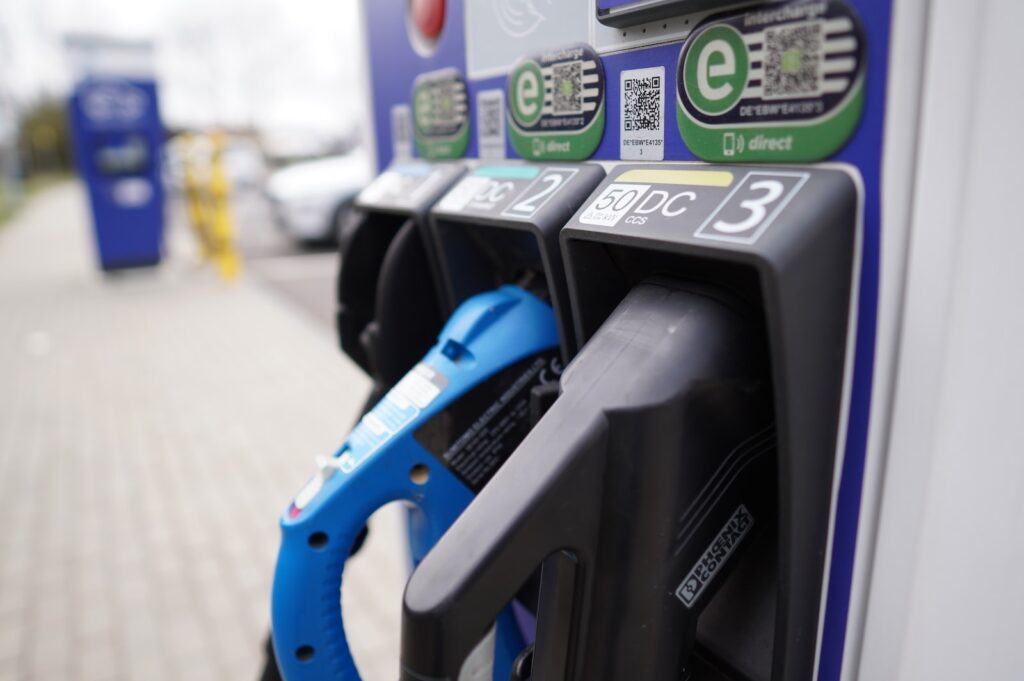Feature: Is there a North v South divide in EV charging infrastructure?
Independent consultant on climate change, low carbon and renewable energy, Stephen Cirell, explores whether local authorities should be responsible for implementing EV infrastructure and the disparities between EV charge points in the North and South.
It has been apparent for some time that electric vehicles will be the medium that replaces the vehicles currently powered by the internal combustion engine, at least for cars and smaller vehicles. However, with that realisation a whole host of other issues arise, not least how all of those cars can be charged on a regular basis. There are over 30 million cars on the UK’s roads and the necessity for appropriate charging facilities is growing by the day.
The Government estimates that 300,000 public chargers will be required by 2030; bearing in mind the 30,000 landmark has only been passed this year, this demonstrates how far there is to go.
In some ways, the provision of 30,000 + chargers already seems impressive but there are other problems. Primary amongst them is their geographical distribution. It is often referred to as ‘the North / South divide’ but in truth is is a little more complicated than that. Either way, it is clear that local government will have a key role in ensuring that sufficient charging capability is provided evenly across the country. However, a new survey confirms that local authorities are anxious about their performance on the provision of electric vehicle (EV) charging to date.
The survey is by APSE, a not for profit unincorporated association, effectively owned by 300 local authorities. It provides a range of services for its members and recently canvassed them on the issue of EV public chargepoints (EV Infrastructure Survey Report 2022).

Taking the distribution point first, the Survey reveals: ‘However, despite this progress, the geographical spread of chargepoints across the country is not equal and some regions are advancing significantly quicker than others. Government data shows that London and Scotland have the highest proportion of EV chargepoints per 100,000 residents with 116 and 55 per 100,000 respectively, whilst Northern Ireland has the lowest proportion of EV chargepoints with just 17 per 100,000, followed by the North West and Yorkshire & the Humber.’
This raises the obvious question as to why some areas are better served than others and is this a traditional levelling up issue? The key factor is whose role is it to provide public chargepoints? I find it curious to hear the view that this should be a local authority role – after all, the local Council does not run garages or provide petrol or diesel cars with equivalent services.
Another not for profit organisation, this time EU based, is the Transport and Environment Group. In its paper Charging Forward: Creating a world class UK charging network it contrasted the role of facilitation and the role of actual provision of charging points. It believes that local authorities should be under a new statutory duty to oversee the facilitation of EV charging infrastructure in their areas. However, this does not mean fitting chargers. It means co-ordinating the provision, largely by the private sector. It is an interesting point to make this a regulatory issue, bearing in mind its importance to the achievement of the Climate Change Act targets. It should also be pointed out that Transport and Environment added that resources and other support should be provided to local authorities for this purpose.
The issue of who provides the hardware and software is also taxing. The actors here include the local authority, the community, employers, householders and the private sector. Where a large company is concerned, it might provide charging points in company car parks and even offer free charging to its staff as a perk. Some form of community initiative might provide chargers, perhaps in rural areas. Those with an electric car and off street parking will almost certainly have their own charger fitted to their property or garage. Then there are the new charging hubs springing up which offer high power, multi point connections, usually from the private sector.
Provision of chargers can be related to the nature of the driver (employee, shopper, delivery driver etc); or the nature of the site (domestic house, car park, depot, shopping centre); chargers can be slow (3 kW), fast (7-22 kW) or rapid (50 – 350 kW) each playing a different role to the user.
So the mosaic of the landscape is perhaps likened to a Rubic’s cube: getting all of the different elements in line is a real challenge. The question remains should it be local government’s challenge?
Some councils obviously think so, others have been more sanguine about the situation. After all, if you have a busy shopping area in your borough it is likely that the private sector will look to provide EV charging infrastructure, as there is a profitable operation in prospect in the right areas. It is true too that the Government has made provision for the motorway network and trunk roads, where chargers now exist in all service areas. As employers start to realise the benefits of EV provision, it seems certain that they will also provide many of the chargers that will be needed.
One authority therefore took the view that its role would merely be ‘gap filling’ i.e. catering for those areas that others will not. A good example would be social housing estates, which are likely to be unattractive to the private sector or on street charging from lamp posts. In those areas, the local authority will provide the infrastructure and hope to do so on a largely cost neutral basis.
But that still doesn’t address the issue of ensuring provision (by whoever) is comprehensive and fit for purpose across the area, rather than sporadic and eclectic in nature. On this score a good case can be made to suggest that someone has to oversee the provision and who better than the local authority? It could operate a regulatory role, which would include planning policy (requiring new buildings to have charging provision, ensuring all new car parks have the necessary infrastructure to provide extensive charging points), ensuring that provision is spread out across an area and ensuring that services are maintained to a high standard of availability and are fully accessible.
The Transport and Environment group’s indication that Government funding and assistance would be required is also well made. Currently, the funding is largely directed at provision of the infrastructure itself rather than on the role of overseeing the system locally.
If provided with the proper support and funding, it is unlikely that local authorities would object to such a role. However, the APSE survey quoted above went on to ask a number of pertinent questions of its members as to the performance of their authorities in relation to EV charging. Interestingly, a majority of responses to the question ‘on a scale of 1-10, how well do you think your authority has performed in ensuring local demand for EV charging infrastructure is currently met?’ felt that there was room for improvement.
Data is one of the main problems in both the facilitation role and also deciding whether to go for direct provision. Here there is definitely a need for improvement. Key questions need to be asked, such as how many EVs are there registered in your area? How many residents have expressed the intention to move to an EV in the next 5 years? How many charge points are there currently and provided by whom? How many employers have provided or are intending to provide chargers for their workers? Are there any special needs? For example, tourist areas where there are significant numbers of visitors. Only when this data has been gathered will the Council be in a position to assess the needs of its area and then come up with a plan to address those needs.
So the North / South divide does exist, in the sense that London has more chargers than anywhere else due to the sheer extent of its urban geography, but really the issues are much wider and more complicated than that. The Government needs to decide what role it will take and what roles others should have and must provide the resources for this work to be properly overseen. Only then will the areas that are already standing out as being under provided for in EV charging terms have any chance of catching up.
Photo by Sophie Jonas and Jannis Lucas
















